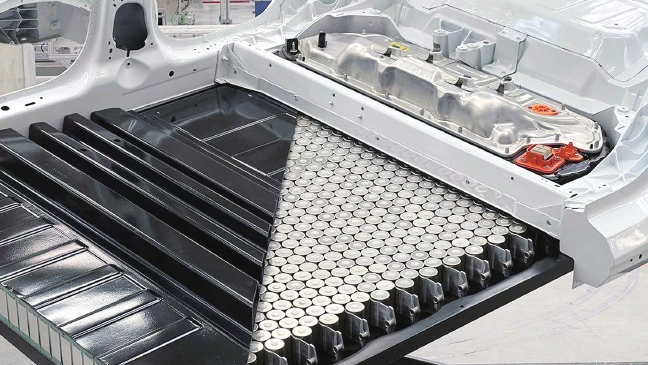The battery industry is rapidly adopting hybrid laser/resistance welders, and for good reason. As electric vehicles (EVs) and energy storage systems (ESS) push for higher performance, manufacturers need welding solutions that combine speed, precision, and reliability. Here’s why hybrid welding is becoming the gold standard:
1. Meeting the Demands of Next-Gen Battery Designs
Thinner, Stronger Materials:
Today’s lithium-ion batteries use ultra-thin foils (as slim as 6–8µm copper and 10–12µm aluminum), which are prone to burn-through or weak spots with traditional resistance welding. Laser welding (like fiber lasers at 1070nm wavelength) delivers micron-level precision, minimizing heat damage while keeping joints strong (>100 MPa).


Multi-Layer Welding Challenges (e.g., Tesla’s 4680 Cells):
Welding 20+ electrode layers in batteries like Tesla’s 4680 requires both speed and depth—hybrid systems use lasers for fast, precise alignment (20+ m/s scanning) and resistance welding for deep, reliable fusion.
2. Solving the Weaknesses of Single-Method Welding
Laser Welding’s Drawbacks:
Struggles with reflective metals like aluminum and copper (unless using expensive green/blue lasers).
Highly sensitive to surface contaminants (dirt, oxidation)

Resistance Welding’s Shortcomings:
Lacks precision for delicate materials.
Electrodes wear out quickly, increasing maintenance.
Why Hybrid Wins:
The laser pre-cleans surfaces, while resistance welding ensures deep, durable bonds—perfect for aluminum battery casings (like those in Tesla’s Model Y structural packs).
3. Faster Production & Lower Costs
Speed Boost:
Hybrid systems can laser-weld a 1m seam in 0.5 seconds while resistance welding handles another joint simultaneously—cutting cycle times by 30–40%.
Fewer Defects, Less Waste:
Cracks and weak joints drop dramatically, reducing scrap rates from ~5% to under 0.5%—a huge deal for gigafactories.
Longer-Lasting Equipment:
Laser cleaning triples electrode lifespan, slashing maintenance costs.
4. Meeting Strict Safety & Compliance Standards
Preventing Thermal Runaway:
Hybrid welding ensures deeper penetration (≥1.5mm for aluminum), creating airtight seals that pass helium leak tests (<0.01 cc/min).
Full Data Tracking (Industry 4.0 Ready):
Real-time monitoring of laser power (±1.5%) and resistance current (±2%) meets IATF 16949 automotive quality requirements.
5. Real-World Success Stories
Tesla’s 4680 Line: Uses IPG lasers + Miyachi resistance welders to achieve >98% yield at 0.8 seconds per weld.
CATL’s CTP Battery Packs: Hybrid welding strengthens ultra-thin copper joints by 60%.
BYD’s Blade Battery: Avoids warping in long-format cells thanks to hybrid welding.
The Bottom Line: Hybrid Welders Are the Future
This isn’t just a trend—it’s a must-have for:
✔ Thinner, higher-capacity batteries
✔ Faster, more reliable production
✔ Meeting today’s safety regulations
By 2027, the global hybrid welding market for batteries is expected to hit $7+ billion, growing at ~25% annually. Factories that ignore this shift risk falling behind in cost, quality, and efficiency.
Want specifics on the best hybrid welding machines? [Contact us for expert recommendations!]
The information provided by Styler on https://www.stylerwelding.com/ is for general informational purposes only. All information on the Site is provided in good faith, however, we make no representation or warranty of any kind, express or implied, regarding the accuracy, adequacy, validity, reliability, availability or completeness of any information on the Site.
UNDER NO CIRCUMSTANCE SHALL WE HAVE ANY LIABILITY TO YOU FOR ANY LOSS OR DAMAGE OF ANY KIND INCURRED AS A RESULT OF THE USE OF THE SITE OR RELIANCE ON ANY INFORMATION PROVIDED ON THE SITE. YOUR USE OF THE SITE AND YOUR RELIANCE ON ANY INFORMATION ON THE SITE IS SOLELY AT YOUR OWN RISK.
Post time: Sep-03-2025








